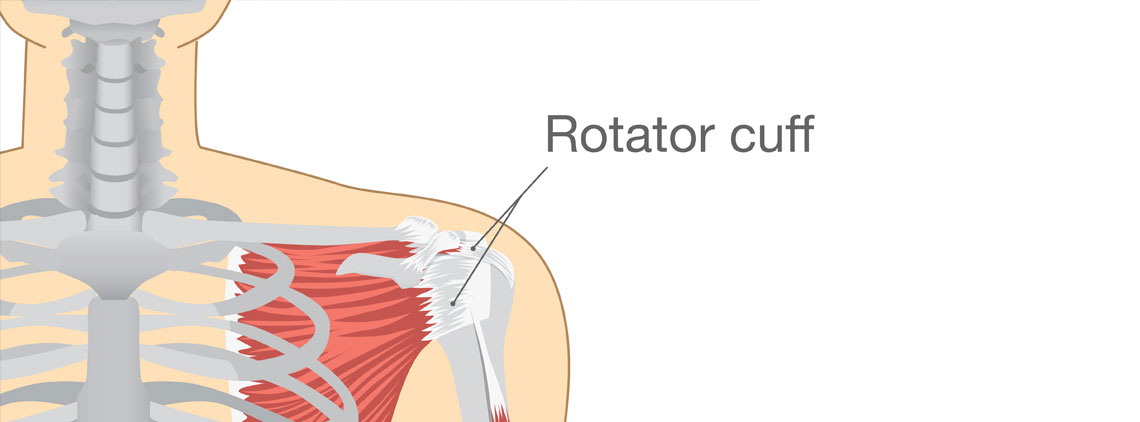
Rotator Cuff Tear
Overview
More than two million Americans suffer from rotator cuff problems every year, according to the American Academy of Orthopaedic Surgeons (AAOS). If you have a rotator cuff tear you likely are experiencing pain and weakness in your shoulder. You may struggle to do daily activities that require you to lift your hand above your head, like washing your hair or putting on a shirt. You may experience pain when you sleep on the affected shoulder, weakness when rotating your arm, or cracking when you move your shoulder in a certain position.
A rotator cuff tear injury occurs when the tendon is torn from the head of the humerus (upper arm bone). These tears generally begin by fraying before they completely tear. The tendon typically torn is the supraspinatus tendon. There are two different types of tendon tears — the partial tear and the complete (full-thickness) tear. If you continue to use your arm after a tear you can cause the tear to increase in size.Causes
There are two major types of causes of rotator cuff tears: injury and degeneration. You may be in intense pain if you injured your rotator cuff through an injury. This injury may have occurred by picking up something too heavy or if you fell on your outstretched arm. You might have experienced additional injuries like a broken collarbone if you fell. Some patients experience degenerative rotator cuff injuries which are due to the tendon wearing down over time. If your rotator cuff injury is due to a degenerative cause, your dominant arm likely has the tear and you may be experiencing weakness and a snapping sensation. There are several factors that cause degenerative tears like:
- Bone Spurs.. A bone spur is an overgrowth of bone that increases as we age. If you have a bone spur on your shoulder, you may experience pain due to your bones rubbing on one another. This will weaken the tendon and make it more likely to tear.
- Lack of blood supply.Our bodies depend on a healthy blood supply to repair damage to tendons. As we age the amount of blood supply in our rotator cuff tendons decreases. The lack of blood supply can lead to a tendon tear.
- Repetitive stress. Many who play sports like baseball, rowing, tennis, and weightlifting or those with occupations like painting or carpentry are at an increased risk due to an overuse of their shoulder. Repeating the same motions can stress your rotator cuff tendons and muscles.
Due to these factors, rotator cuff tears occur largely in people over the age of 40 years old.
Nonsurgical Treatment Options for a Rotator Cuff Tear
Nonsurgical treatment relieves pain and improves function in about 80% of patients. Some of the nonsurgical options include:
- Anti-inflammatory Medicine. Avoid activities that cause you to lift your arm or rotate your arm.
- Rest.In addition to avoiding activities that cause you to lift your arm, you may be asked to rest and wear a sling to stabilize your shoulder.
- Anti-inflammatory Medication.Through the use of drugs such as ibuprofen and Advil, you may be able to reduce pain and swelling.
- Physical Therapy. Physical therapy exercises may be provided for you to do at home to alleviate pain, improve flexibility, and increase your range of motion.
- Steroid Injection. A stronger anti-inflammatory medication known as a steroid might be suggested if you’ve tried the options above, but you are still experiencing pain.

